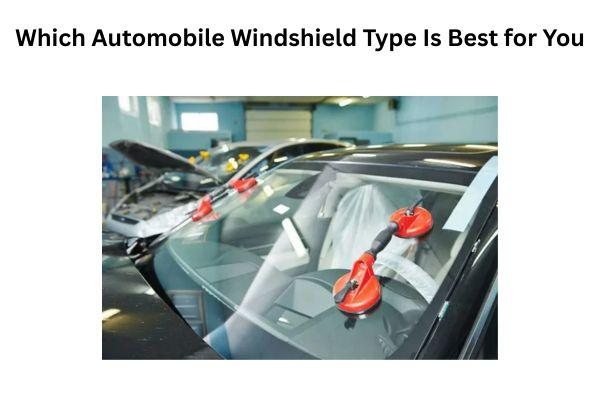Introduction
Your car’s windshield is more than just a glass panel in front of you—it’s your safety shield. It protects you from wind, dust, debris, and even harsh weather. But not all automobile windshields are the same. When you need to replace or choose a new one, it’s important to know which type suits your car best.
Let’s understand the different types of automobile windshields, how they differ, and how to pick the right one for your needs.
Understanding the Role of a Windshield
A windshield isn’t just a piece of glass. It plays a major role in maintaining your safety while driving. It supports the roof, provides structural strength to your car, and ensures that airbags deploy correctly during an accident.
A good windshield must be:
-
Strong and shatter-resistant
-
Clear and distortion-free
-
Properly fitted to the car frame
These features make it vital to pick the right windshield type when replacement or repair is needed.
Main Types of Automobile Windshields
There are two major types of automotive windshields used today—laminated glass and tempered glass. Each has different features, benefits, and uses.
Laminated Glass Windshield
Laminated glass is the most common type of windshield used in modern vehicles. It is made by sandwiching a layer of polyvinyl butyral (PVB) between two glass sheets. This structure keeps the glass from shattering during impact.
Key Benefits of Laminated Glass
-
Safety: Even if it cracks, it won’t break into sharp pieces.
-
Noise Reduction: The PVB layer helps reduce outside noise.
-
UV Protection: Blocks most ultraviolet rays, protecting passengers.
-
Durability: It can handle strong wind pressure and heavy impacts.
Ideal For
Everyday passenger cars, SUVs, and vehicles that need high safety standards. It’s perfect if you often drive long distances or through busy roads.
Tempered Glass Windshield
Tempered glass is made through a heating and cooling process that makes it four to five times stronger than normal glass. However, when it breaks, it shatters into small, blunt pieces to prevent serious injury.
Key Benefits of Tempered Glass
-
Strong and Tough: Can handle minor impacts and stress.
-
Shatter-Safe: Breaks into small harmless pieces, reducing injury risk.
-
Cost-Effective: Usually cheaper than laminated glass.
Ideal For
Tempered glass is often used for side and rear windows, but some older cars may still have it on the front windshield.
Laminated vs. Tempered Glass: A Quick Comparison
| Feature | Laminated Glass | Tempered Glass |
|---|---|---|
| Safety | Doesn’t shatter completely | Breaks into small pieces |
| Strength | Very strong | Strong but less flexible |
| Cost | Slightly higher | More affordable |
| Noise and UV Protection | Excellent | Limited |
| Usage | Mostly for front windshields | Side and rear windows |
New Windshield Technologies
Modern vehicles come with advanced glass technologies that improve comfort, safety, and visibility. Some of these include:
Acoustic Windshields
These are laminated glasses with an extra soundproof layer. They keep road and wind noise to a minimum, making your drives quieter.
Heated Windshields
Have thin heating wires that help clear fog and ice quickly, ideal for cold climates.
Solar Control Windshields
These reduce glare and block heat from sunlight, keeping the car cooler during hot days.
HUD-Compatible Windshields
Some new cars feature windshields compatible with Head-Up Displays (HUD) that project speed and navigation data on the glass.
How to Choose the Right Windshield for Your Car
Choosing the best windshield depends on several factors. Here’s what to consider:
1. Car Model and Make
Always check what type of glass your car manufacturer recommends. Luxury or high-end cars often require laminated or specialized windshields.
2. Driving Conditions
If you drive mostly on highways, go for laminated glass for extra safety. For off-road or rough conditions, choose a reinforced or thicker windshield.
3. Budget
While tempered glass may be cheaper, laminated glass offers more safety features. Think of it as a long-term investment for your safety.
4. Additional Features
If you live in noisy or sunny areas, an acoustic or solar windshield is a smart choice.
Maintenance Tips for Your Windshield
-
Clean your windshield regularly with soft microfiber cloths.
-
Avoid harsh chemicals; use glass-safe cleaners.
-
Replace wipers often to prevent scratches.
-
Fix small chips immediately to avoid cracks spreading.
-
Don’t park under extreme heat for long periods.
When to Replace Your Windshield
You should consider replacement if:
-
There are cracks larger than a few inches.
-
The damage affects the driver’s line of sight.
-
There’s white haze or discoloration on the glass.
-
Your windshield is no longer fitting tightly to the frame.
Final Thoughts
Your windshield is your first layer of protection on the road. Choosing the right type ensures not only safety but also comfort while driving. Between laminated and tempered glass, laminated windshields are generally the best option for modern vehicles due to their safety and durability.
For more insightful articles related to this topic, feel free to visit turkhand.org



